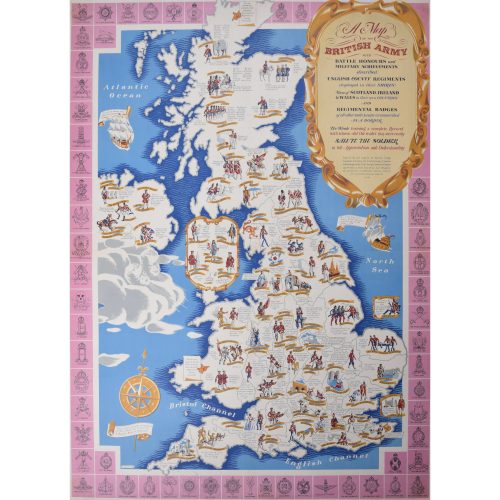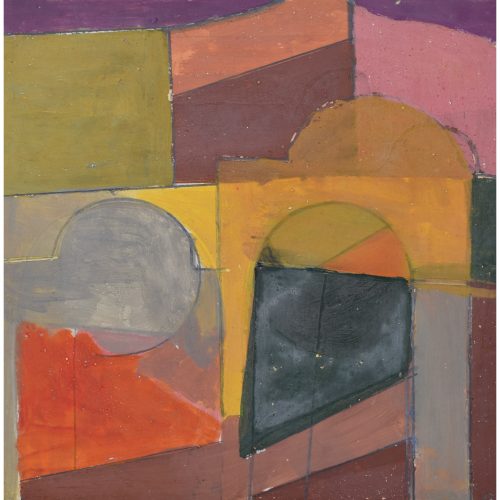-
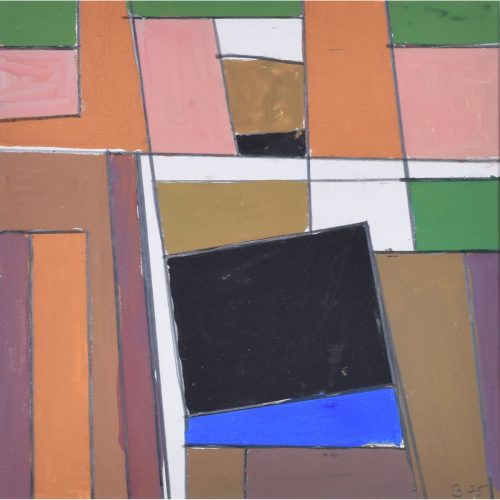
John Barnicoat MA ARCA (1924 - 2013) Harbour (1975)
Tempera on card 26 x 26 cm Initialled B and dated '75. John Barnicoat was a painter of oils and works on paper using tempera, conté, acrylic, pen, and ink. He was brought up in Cornwall and educated at King’s College, Taunton. He joined the Royal Naval Volunteer Reserves and took part in D-Day, aged 29. He went on to read history at Lincoln College, Oxford, and also studied at the Ruskin School of Drawing. He attended the Royal College of Art in the early 1950s, eventually becoming the Senior Tutor at the RCA Painting School between 1976 and 1980. He was the head of Falmouth School of Art 1972 - 1976 and Head of the Chelsea School of Art 1980 - 1989. He wrote 'Posters: a Concise History' in 1972, and organised and curated exhibitions in the UK and Russia on the art of poster design. From 1989 onwards he produced numerous drawings and oils of the bridges of London, women’s heads, acrylic and conté works on paper, and pen and wash drawings of women dressing. His work is represented in both government and private collections, and was recently shown at The Belgrave Gallery, St Ives (2017 - 2022). Provenance: the artist's estate. Condition: generally very good; in hand-finished frame. If you are interested, please email info@manningfineart.co.uk or call us on 07929 749056. Click here for other Modern British original paintings. -
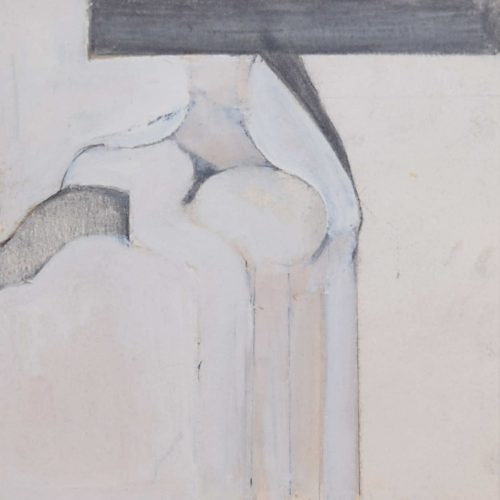
Adrian Heath Abstract Study III (1975)
Acrylic and pencil on paper 22 x 22cm Heath was born in Burma in 1920 and arrived in England aged five. In 1938 he studied art under Stanhope Forbes at Newlyn and later at the Slade School of Art. While serving in WWII, he was captured and placed in a prisoner-of-war camp in Bavaria. Heath attempted to escape from the camp but was recaptured and placed in solitary confinement; this isolation proved crucial to the development of his artistic style, as he spent much of his time there experimenting with abstract forms. When released from confinement, Heath befriended a fellow prisoner of war: Terry Frost. Together they explored the methods of painting which they had developed during their time in the camps, and following the war both became celebrated artists. We have several Terry Frost pieces available too. In 1949 and 1951, Heath returned to Cornwall. He spent time with artists like Ben Nicholson, Victor Pasmore, and Anthony Hill, and became the main link between the emerging St Ives School of artists and the British Constructivist movement back in London. He is further credited with promoting British abstract art through informal exhibitions in his studio on Fitzroy Street, as well as his manifesto-like text entitled 'Abstract Art: Its Origins and Meaning', which was published in 1953. Over time, Heath's paintings of abstract geometry and symmetry became increasingly dynamic and heavily textured, the result of layering paint on paint over the course of several days. This study features a muted colour palette and abstract asymmetric form. If you'd like to know more, please email info@manningfineart.co.uk or call us on 07929 749056. Condition: Good. Signed lower right. -
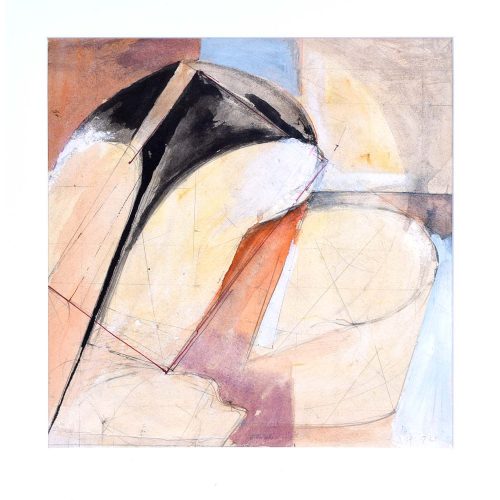
Adrian Heath Abstract Study I (1970)
Gouache & ink 35x33cm Heath was born in Burma in 1920 and arrived in England aged five. In 1938 he studied art under Stanhope Forbes at Newlyn and later at the Slade School of Art. While serving in WWII, he was captured and placed in a prisoner-of-war camp in Bavaria. Heath attempted to escape from the camp but was recaptured and placed in solitary confinement; this isolation proved crucial to the development of his artistic style, as he spent much of his time there experimenting with abstract forms. When released from confinement, Heath befriended a fellow prisoner of war: Terry Frost. Together they explored the methods of painting which they had developed during their time in the camps, and following the war both became celebrated artists. We have several Terry Frost pieces available too. In 1949 and 1951, Heath returned to Cornwall. He spent time with artists like Ben Nicholson, Victor Pasmore, and Anthony Hill, and became the main link between the emerging St Ives School of artists and the British Constructivist movement back in London. He is further credited with promoting British abstract art through informal exhibitions in his studio on Fitzroy Street, as well as his manifesto-like text entitled 'Abstract Art: Its Origins and Meaning', which was published in 1953. Over time, Heath's paintings of abstract geometry and symmetry became increasingly dynamic and heavily textured, the result of layering paint on paint over the course of several days. Here, his colour palette surrenders to the compelling geometry of the painting's abstract forms. If you'd like to know more, please email info@manningfineart.co.uk or call us on 07929 749056. Condition: Good. -
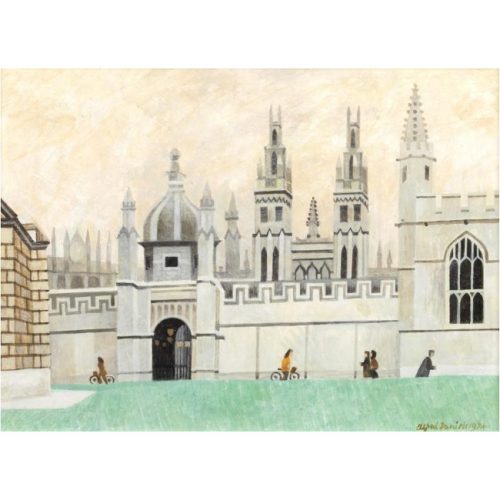 Alfred Daniels RBA RWS (1924-2015) All Souls, Oxford Acrylic on paper In a hand-finished white frame. 22x29.5cm (8.6x11.6 inches) Click here for biographical details and other works by the artist. If you are interested email info@manningfineart.co.uk or call us on 07929 749056.
Alfred Daniels RBA RWS (1924-2015) All Souls, Oxford Acrylic on paper In a hand-finished white frame. 22x29.5cm (8.6x11.6 inches) Click here for biographical details and other works by the artist. If you are interested email info@manningfineart.co.uk or call us on 07929 749056. -
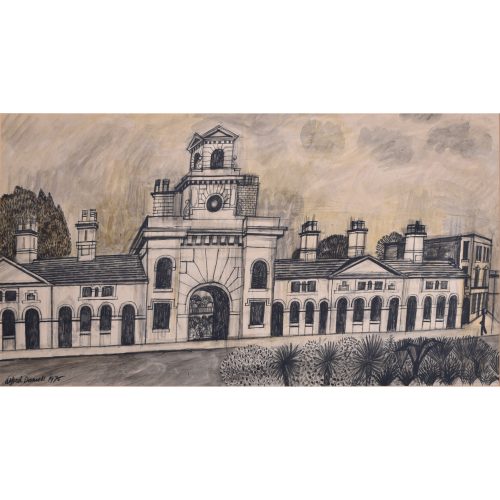
Alfred Daniels (1924-2015)
Almshouses Canning Circus Nottingham
Conte and wash, 1975 33x62cm Signed and dated 'Alfred Daniels 1975' Click here for biographical details and other works by the artist. If you are interested email info@manningfineart.co.uk or call us on 07929 749056. -
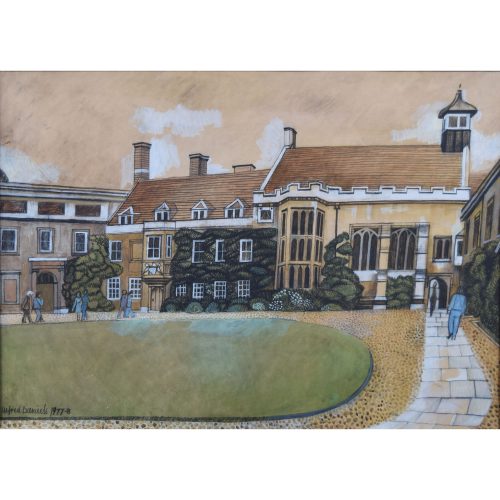
Alfred Daniels RBA RWS (1924-2015)
Christ’s College, Cambridge
Gouache, watercolour and ink on board 40x56cm (15.7×22 inches). In a hand-finished cream frame. Click here for biographical details and other works by the artist. If you are interested email info@manningfineart.co.uk or call us on 07929 749056. -
Out of stock
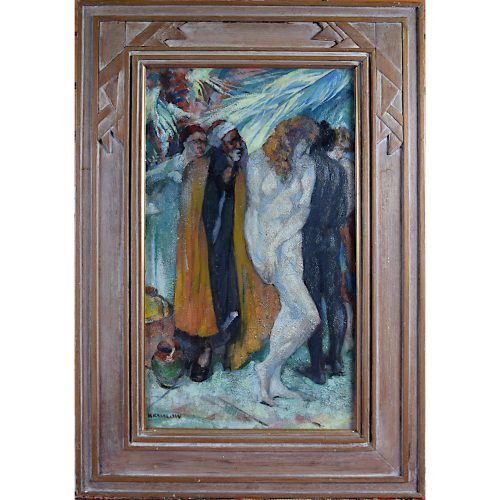
Alfred Wolmark (1877-1961)
Peace Paraded by Conflict
Oil on panelSigned lower left; original frame. An allegorical scene of Peace as a female nude. Alfred Aaron Wolmark was an influential Post-Impressionist painter who studied and exhibited at the Royal Academy Schools and between 1901 and 1936. Wolmark was noted for his use of impasto and for his skills as a colourist. If you’d like to know more, please email info@manningfineart.co.uk or call us on 07929 749056. Condition: Generally excellent; original frame shows a little wear.60 x 34cm -
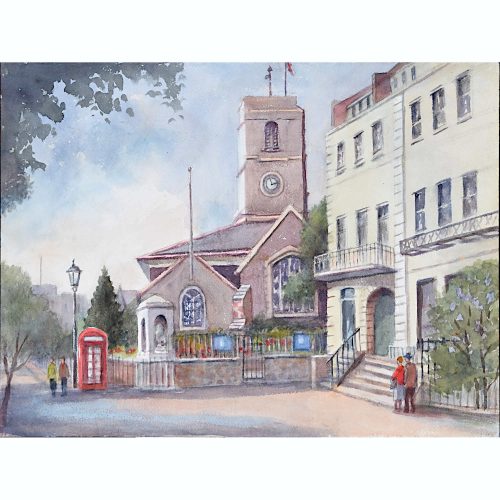
Angela Stones (1914-1995) Chelsea Old Church
Watercolour 31x41 cm Stones was a member of an artistic dynasty. Her mother Dorothy Bradshaw (1893-1983) studied under Jack Merriott - the artist famous for his British Rail posters, and her son, Christopher Assheton-Stones (1947-1999) was probably the foremost pastel artist of his time. If you are interested email info@manningfineart.co.uk or call us on 07929 749056. -
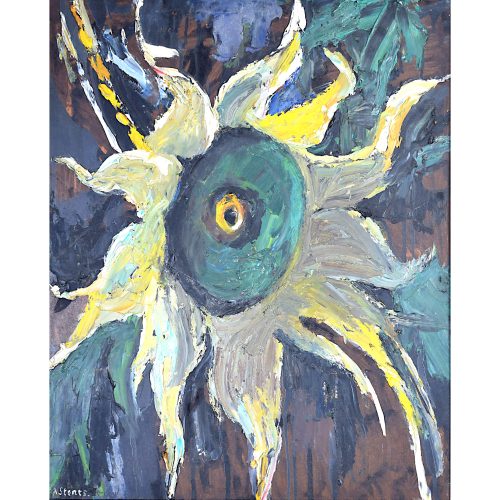
Angela Stones (1914-1995) Helianthus
Oil on canvasboard 44x55cm Signed lower left Stones was a member of an artistic dynasty. Her mother Dorothy Bradshaw (1893-1983) studied under Jack Merriott - the artist famous for his British Rail posters, and her son, Christopher Assheton-Stones (1947-1999) was probably the foremost pastel artist of his time. Here a generous use of impasto captures the texture of a Helianthus - Sunflower. A suggestion perhaps of surrealism in choice of colours helps with the mid-century feel of the painting. If you are interested email info@manningfineart.co.uk or call us on 07929 749056. Condition: Good. -
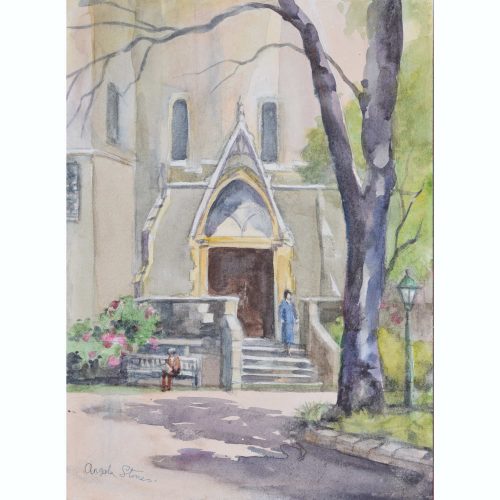
Angela Stones (1914-1995) Holy Trinity Brompton Church
Watercolour 31x41 cm Signed 'Angela Stones' Stones was a member of an artistic dynasty. Her mother Dorothy Bradshaw (1893-1983) studied under Jack Merriott - the artist famous for his British Rail posters, and her son, Christopher Assheton-Stones (1947-1999) was probably the foremost pastel artist of his time. If you are interested email info@manningfineart.co.uk or call us on 07929 749056. -
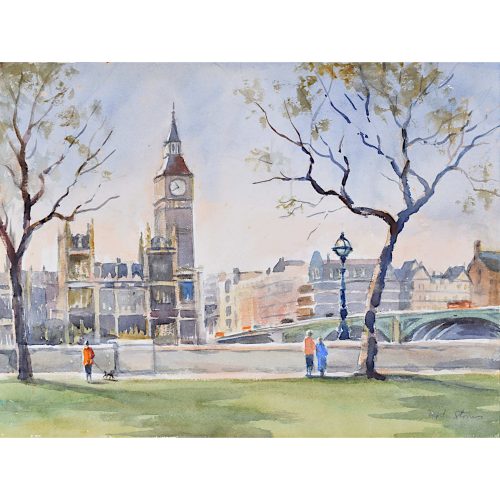
Angela Stones (1914-1995) Westminster Bridge and the Houses of Parliament
Watercolour 31x41 cm Stones was a member of an artistic dynasty. Her mother Dorothy Bradshaw (1893-1983) studied under Jack Merriott - the artist famous for his British Rail posters, and her son, Christopher Assheton-Stones (1947-1999) was probably the foremost pastel artist of his time. If you are interested email info@manningfineart.co.uk or call us on 07929 749056. Condition: Good. -

Angela Stones (1914 - 1995)
Still Life with Fruit and Bottle
Oil on board 39 x 49 cm A stylish mid-century still life. Stones was educated at the Chelsea School of Art, and was a member of an artistic dynasty. Her mother Dorothy Bradshaw (1893-1983) studied under Jack Merriott – the artist famous for his British Rail posters, and her son, Christopher Assheton-Stones (1947-1999), was arguably the foremost pastel artist of his time. Provenance: the family of the artist. Condition: Generally very good. If you’d like to know more, please email info@manningfineart.co.uk or call us on 07929 749056. -
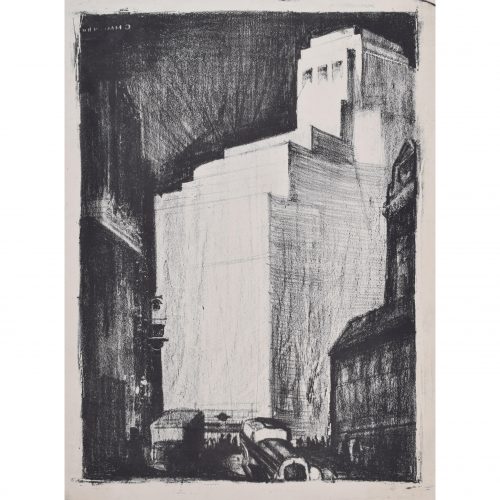
Gerald Mac Spink (flourished 1920 - 1940)
Art Deco City Scene with Engine Car
Block print 41 x 29 cm Signed 'G Mac Spink' in plate (in reverse) upper left. "Over the great bridge, with the sunlight through the girders making a constant flicker upon the moving cars, with the city rising up across the river in white heaps..." - F Scott Fitzgerald, The Great Gatsby An Art Deco city with 1920s engine-cars in the foreground. A white tower-block rises up, emerging palely from a chiaroscuro darkness, a great edifice above the tiny pedestrians below. Spink was a skilled artist, illustrator, and designer who produced a series of posters in the inter-war period for companies including the London Underground, Southern Railways, LNER, Hawker Engineering, and British Steel. He won a prize in 1933 from the Imperial Institute for his poster artwork. He also worked as an aeronautical engineer in Kingston-on-Thames for Hawker Engineering; his greatest achievement was the creation of the 'Squanderbug', a 500cc racing car which he built in 1947, and which races even to this day. Provenance: the artist's estate. Condition: very good. If you are interested, please email info@manningfineart.co.uk or call us on 07929 749056. Click here for other works by the artist. -

Blair Hughes-Stanton (1902-1981) Reclining Nude, c. 1936
Tempera on canvas 76.5 x 102cm Signed lower right 'Blair H S'. Provenance: The estate of the artist. A magnificent abstract nude rendered in a dynamic colour palette. This is probably Hughes-Stanton's most important work, and belongs to the nation's great, if brief, period of British Surrealism. The three major elements are distinct: the pastel tones of the window view and wall, the sensual curvatures of the pale nude, and the bold foreground featuring a fantastically accomplished still life of a fruit bowl (which could be a painting in and of itself) and the impressively phallic chair back. This is a brilliant example of erotic modernist abstraction. Blair Hughes-Stanton, son of the artist Sir Herbert Hughes-Stanton, was a noted British artist of the interwar period. At the age of 13 he joined the Royal Navy training ship HMS Coway, but at 19 - advised by his father - he abandoned the sea for his paintbox. He studied art at Byam Shaw School (1919-1922) where he was influenced by Leon Underwood (who was a major influence throughout his studying), Royal Academy Schools (1922-23), and Leon Underwood's School (1923-25). He was celebrated mostly for his skills as an engraver, and was a founding member of the English Wood Engraving Society when it was established in 1925. His first wife was the printmaker Gertrude Hermes with whom he illustrated John Bunyan's The Pilgrim's Progress in 1928. In 1931 he became head of the Gregynog Press, later establishing the Gemini Press with his second wife Ida Graves. During the course of his career he worked in various media, though his art frequently focused on the female nude. He taught at Westminster School of Art (1934-39), Colchester School of Art (1945-47); St Martin's School of Art (1947-48); and Central School of Arts and Crafts (1948-80). His teaching career was interrupted by the Second World War, during which he served as a camofleur and then joined the Royal Engineers (ignoring his earlier life in the Navy). Serving in Greece, he was captured as a prisoner of war and was imprisoned in a camp. He returned to England after the war. If you’d like to know more, please email info@manningfineart.co.uk or call us on 07929 749056.

